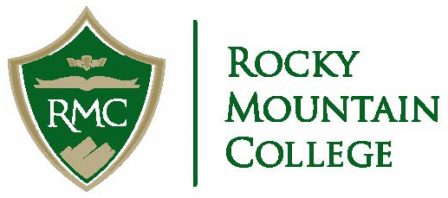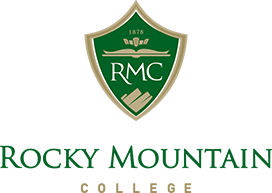Résumés & CVs
October 14, 2022 2024-02-16 17:03The ideal résumé is a concise, well-organized, aesthetically pleasing document that describes your background as it relates to your current career objective. It is not meant to be a complete autobiography.
Contents of a Résumé
Contact Information
Include name, address, phone number, and professional email address.
Your name should be the most prominent text on your résumé.
Career Objective or Summary
Used to express your career or current interests and reference the skills you bring to the specific position to which you are applying. Some applicants chose to use a "Personal Summary" or "Summary of Qualifications" section. This lists, in bullet point format, the skills, traits, and experiences you have that directly relate to the job to which you are applying.
Education
Include names and locations of college(s) attended, dates of graduation (or anticipated), degree(s) earned, and major/concentration. You may include your GPA if 3.00 or better (correct format: GPA: 4.00). List awards and honors, and you may include relevant coursework as well. Certifications and licenses can be included here also.
Experience
For each experience include place of employment, location (city, state), dates of employment, job title, and description of accomplishments and responsibilities. Use action verbs to describe your accomplishments and responsibilities. Quantify the results or scope of your experiences as much as possible. You may include relevant, longer-term volunteer experiences in this section.
Skills
Not necessary, but allows you to list position/field specific skills. Consider technical skills, computer skills, language skills, or other special skills that would make an employer attracted to you as a candidate.
References
List professional references only, not personal references such as family members, friends, etc. Additional detailed information is available in the References section of the Career Toolbox.
If you are seeking additional résumé assistance, read through RMC's résumé guidelines and 10 Steps to Creating a Winning Résumé. You can also review sample résumés put together as guidelines to help you through your own resume creation. To add an energy to your words and interest to your resume, read through the action verbs that invigorate writing.
Resume Do's and Don'ts
Do
- Create a professional, well-organized résumé.
- Be honest and truthful.
- Use high quality paper, either white or off-white.
- Be conservative and consistent with the use of fonts, bolding, italicizing, underlining, etc.
- Use concrete, specific nouns and strong action verbs in past tense for past experiences and present tense for anything that you are currently doing.
- Quantify as much as possible: number of people supervised or trained, amount of budget responsible for, etc.
- Customize to a specific position or company.
- Be concise. This is a summary of your past work experiences and education.
- When uploading a resume or cover letter to a job site, use a Word format; when attaching to an email, convert to a PDF.
Do Not
- Misspell words or have incorrect grammar.
- Have too many different margins or spaces, especially when sending electronically.
- Use abbreviations. Spell out acronyms so employers can fully understand what you are conveying.
- List your social security number, personal photo, or information such as birthdate or family, supervisor's names (except for the reference page), or reasons for leaving positions.
- Include any mention of salary.
- Include anything that you would not want to be asked about in an interview.
What is a Curriculum Vitae/CV?
A curriculum vitae or CV is similar to a résumé in that it provides an overview of your professional and educational experience. The difference between the two primarily lies in content and purpose. A CV is typically developed for application for teaching or research positions in a university or research setting. A résumé is prepared for employers outside the academic environment.
What do I include in a CV?
The CV should begin with name, contact information (including email), and education. Information listed under education, teaching, research, service, or other categories should generally be listed in reverse chronological order, with the most recent listed first. Education: Include the name of the colleges or universities attended, city and state of each, degrees earned, area(s) of study, and graduation dates. List the title of each thesis/dissertation, as well as the primary advisor. Beyond this basic information, category headings used within CVs may vary widely. However, there are certain major areas that require mention, regardless of specific headings used. These are:
- Teaching: List all teaching fellowships, assistantships, or any other experiences working with students in a classroom/laboratory setting. You may also choose to list teaching interests or similar categories.
- Research: Include all relevant research experience in your area of specialization. You may choose to list publications, conference presentations, and any other evidence of scholarly work in this section.
- Service: Include service to the university or community. You may also include professional associations, volunteer work, committee membership, etc., in this section.
It is important to incorporate evidence of teaching, research, and service in your CV, but choice of category headings to cover these areas is purely subjective. Choose category headings that emphasize your particular strengths and achievements. Also, depending on the position to which you are applying, it may make more sense to rearrange categories. For instance, if you are applying for a college teaching position where teaching is the focus, it is recommended to focus on the general area early in the CV. If research is the primary focus of the institution to which you are applying, listing research-related categories near the beginning of the CV will be most effective.
General Tips:
- Length: 2-4 pages for a new professional 4-7 pages for mid level career; 10 pages max.
- Omit reference to marital status, children, health, spouse's work, religious affiliation, and date of birth.
- Do not include headings such as "Curriculum Vitae", "Personal Information", or "Name".
- Use action verbs to begin every job description.
- Add a header with name and page number to each page after the first.
- Be sure to have a counselor and/or faculty member review your CV.
Contact
Career Services
Bair Family Student Center 116


